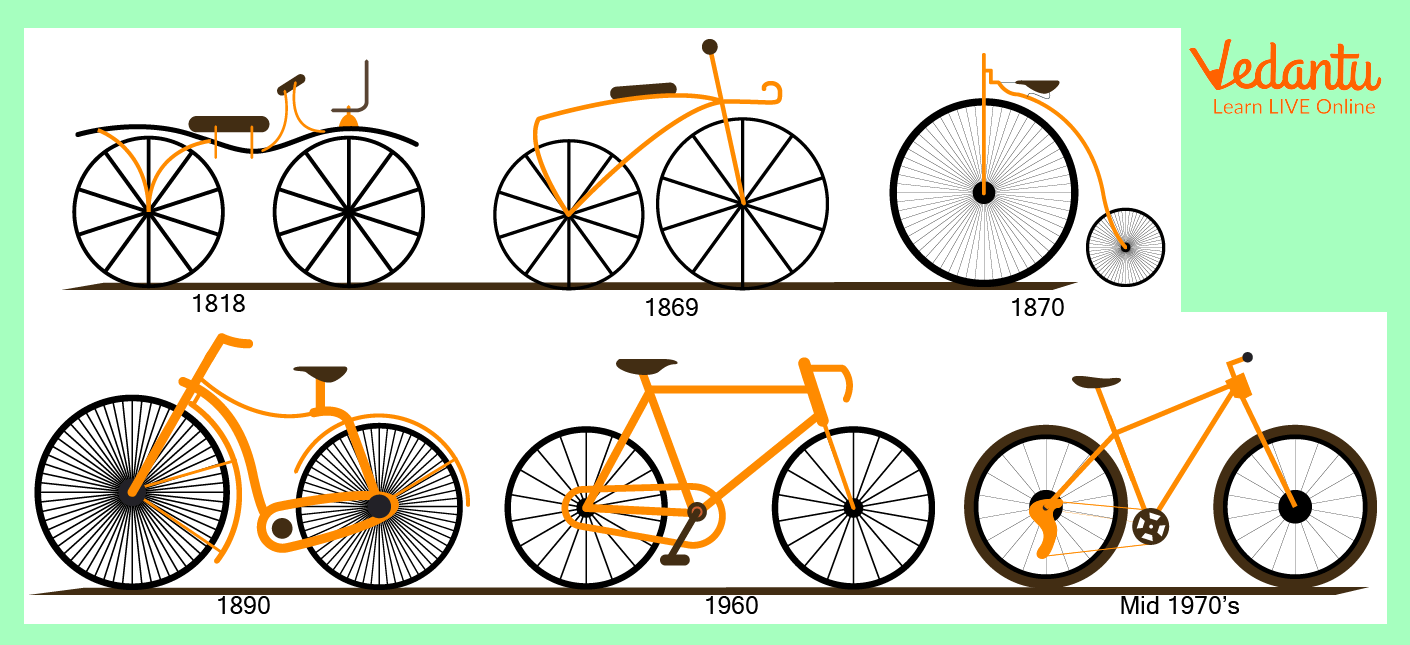




How Did the Modern Bicycle Come into Picture?
The invention is an evolutionary process. If inventing is a ball game, exploring the possibilities to bring that particular invention to good use is a different ball game altogether. In simpler words, inventions were more complicated when actually brought to life and it takes centuries of work and effort to make the inventions more efficient.
Have you come across the evolution of the first computer to the present day’s computer? The history of inventing bicycles is one such story with multiple ups and downs. Some of these major milestones are highlighted in this article. Let’s jump right in!

Evolution of Bicycle From Beginning to Present
The Running Machine
The first recorded model of a bicycle (it wasn’t even known as a ‘bicycle’ then!) was that of the Running Machine. Also known as the ‘dandy horse’ it was invented by German inventor Barn Karl von Drais in the 1800s.

The Running Machine
Limitations
Though this cycle has the basic framework of the cycles we see around us today, it had no pedals! So how did it work? The rider had to sit on top of the wooden framework and push himself by his own feet on the ground. This particular model had no breaks or even steering, which made its use very difficult. Later in the years after the 1820’s, these cycles were barely seen around.
The Boneshaker
The Running machine was known by many names, like Velocipede (meaning fast-moving feet). Attachment of pedals to the front wheels of Velocipede gave the Boneshaker. The name of the bicycle shook so much on the road! (origin of names is such an interesting story themselves). This model of the bicycle was easier to use as it had pedals (no more fast tapping of feet on the ground), thus velocipede was slowly regaining its popularity.
This particular improvement was brought about by Pierre Michaux in the 1860s.

The Boneshaker Bicycle
Limitations
You get the idea that every invention has its own set of limitations so that new inventors can make a few changes to overcome these limitations producing new ones and the process goes on loop! This particular model had pedals attached to just the front wheels of the bicycle which made moving forward very difficult. The framework was super heavy which added to the load.
The High Bicycle
The Boneshaker was further modified to produce what was known as the High bicycle or the Penny Farthing (named from currency coins penny and farthing which were big and small respectively). Eugene Meyer in the 1870s re-designed the Boneshaker. He increased the size of the front wheel and reduced the size of the back wheel and reduced the weight of the super heavy framework of the boneshaker. This was the first model in history to be called a ‘bicycle’.

The High Cycle
Limitations
The Penny Farthing was unsafe. Imagine jumping off the front wheel during a sudden brake! Also, it was difficult to get on and off, especially for women.
The Safety Bicycle
The Penny Farthing was pretty unsafe as mentioned earlier, it had to be made safer for efficient use among the population. This major breakthrough was brought about by Mr John Kemp Starley around the 1890s. He replaced the unequal-sized wheels with equally sized wheels and attached a chain to the back wheels. These changes ensured that the rider wasn’t thrown front during breaks as the centre of gravity shifted (due to better balance).

The Safety Bicycle
Limitations
Only the rubber tyres were a major concern at this point in time. These tyres prevented smooth tyres and caused shaking.
Pneumatic Tyres
Pneumatic (air-filled tyres) were more efficient, and light and ensured smooth travel when compared to the flat rubber tyres used earlier. This invention was made by John Dunlop in the year 1888. These pneumatic tyres replaced the rubber tyres of the safety bicycle for the better.

First Ride with Pneumatic Tyres by John Dunlop
The Modern Bicycle
The safety bicycles with much more improvisation give us today’s Modern Bicycles. Today’s bicycles have much more improvement in terms of efficiency, safety, and speed. Their production (big numbers in factories) has made bicycles an affordable form of transportation. The usage of bicycles is also known to improve the health and strength of the rider and is thus widely used. Modern bicycles have gears to change speeds, safety locks, headlights, and many more features making their usage much easier.

Modern Bicycle
Summary
To quickly brush through the history of bicycle invention that we’ve learnt up until now, the first blueprint of the modern bicycle was the Running Machine made in the 1800s which had no pedals. It was difficult to use as the rider had to push the bicycle on foot. This was then replaced by the Boneshaker which was the first bicycle with pedals attached to the front wheels. Due to its heavy framework and pedals on only the front axle, its use was discontinued after a short while.
Improving on the limitations of the previous model came the Penny Farthing or the High bicycle with a bigger front wheel and a lighter framework came into the picture. This was then replaced by equal size wheeled safety bicycles for better safety. The modern bicycle is an improved safety bicycle.
FAQs on Bicycle Invention
1. What are the different names given to the first bicycle that was invented?
Famously known as the Running machine, other names for this bicycle was
Dandy Horse
Hobby Horse
Velocipede
Swift walker
Running Machine
2. What are the improvements in the modern-day bicycle from the safety bicycle?
Modern-day bicycles are cheaper as they are produced in bulk. They are more lightweight and efficient. They are fast and easy to use. Some of the specific improvements include the following:
Speed breaks
Headlights
Gears for speed control
Electrical horns
Safety locks
Night-safety lights





















